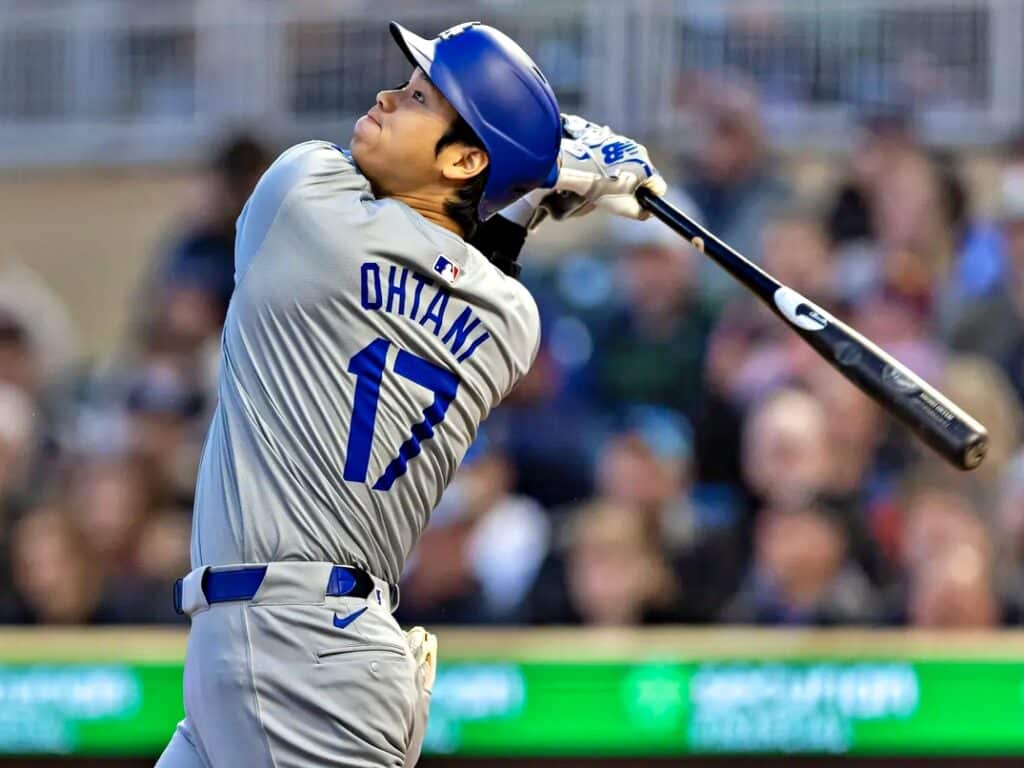
Ten Japanese import players began the 2024 season on Major League Baseball rosters – all in – or trying to be in – prominent roles. So far, most have succeeded, with a few still attempting to find the way.
The most-watched player in the game, of course, is Shohei Othani of the Los Angeles Dodgers, who has gone through a frenzied free-agent chase in the off-season; a record-setting, unusually structured contract; a marriage; and the Ippei Mizuhara gambling scandal. And he somehow has seemed unfazed.
Others, such as starter Yusei Kikuchi of the Toronto Blue Jays, outfielder Seiya Suzuki and pitcher Shota Imanaga of the Chicago Cubs, and reliever Yuki Matsui of the San Diego Padres, have had excellent starts to their seasons. The early report cards for highly touted Dodger pitcher Yoshinobu Yamamoto and veteran Padres starter Yu Darvish are mixed, while starter Kenta Maeda of the Detroit Tigers and outfielder Masataka Yoshida of the Boston Red Sox have stumbled out of the gate and starter Kodai Senga of the New York Mets has yet to pitch because of a stint on the Injured List.
Let’s go into more detail.
Shohei Ohtani
All the drama over the last several months does not appear to have affected Ohtani between the foul lines.
In spring training, he posted a .393 batting average with an OPS of 1.214. Then in the season’s first month, he averaged .336 with an on-base percentage of .399 and slugging percentage of .618. He hit seven home runs and drove in 19 runs. He had a bit of a slow start by his standards, batting just .242 in his first eight games, but he hit his first home run on April 3 and averaged .367 the rest of April.
“You just never learn about a person until they go through some adversity, whether on the field, or in this case, off the field,” Dodgers manager Dave Roberts said. “I’ve learned that he’s unflappable. He really is. In terms of his demeanor, the way he comes in every day, he does a good job of separating work from the other stuff.”
During his hot streak, Ohtani had five straight multi-hit games for the first time in his career, surpassed Hideki Matsui to set a record for home runs by a Japanese-born MLB player, and hit a home run on April 23 against the Washington Nationals that had an exit velocity of 118.7 miles per hour. The latter was the hardest-hit home run of Ohtani’s career, the hardest-hit by a Dodger since Statcast started tracking data in 2015, and the 12th-hardest hit by any player since 2015.
“It look[ed] like a cruise missile,” Dodgers center fielder James Outman said. “That was absurd. That was just absurd.”
But Othani wasn’t through crushing the ball. Just four days later, facing his countryman Kikuchi, he shot an RBI-single to right field at an absurd 119.2 miles per hour. It was the hardest-hit ball of Ohtani’s career, the hardest by any player in MLB this season, and the hardest-hit ball by a Dodger since at least 2015.
Shohei Ohtani single has an exit velocity of 119.2 mph – the hardest hit ball of his career.
It also appears that the controversy surrounding Mizuhara, Othani’s former interpreter and friend, will not affect Ohtani from a legal or reputational standpoint. Conflicting stories at first made the situation very unclear, but prosecutors later charged Mizuhara with bank fraud and released a criminal complaint alleging a lavish embezzlement scheme in which he stole $16 million from Ohtani, who they firmly stated was the victim in the case.
Ohtani thanked the Dodgers for their support, saying, that he realizes “how supportive the teammates, the organization, the staff have been towards me. It’s just allowed me to really reflect on how grateful I am to be surrounded by them.”
Now, he can concentrate solely on his game. Though he won’t pitch in 2024 because of the off-season Tommy John surgery, he began a throwing regimen in late March and expects to be ready for game action in 2025.
Shōta Imanaga
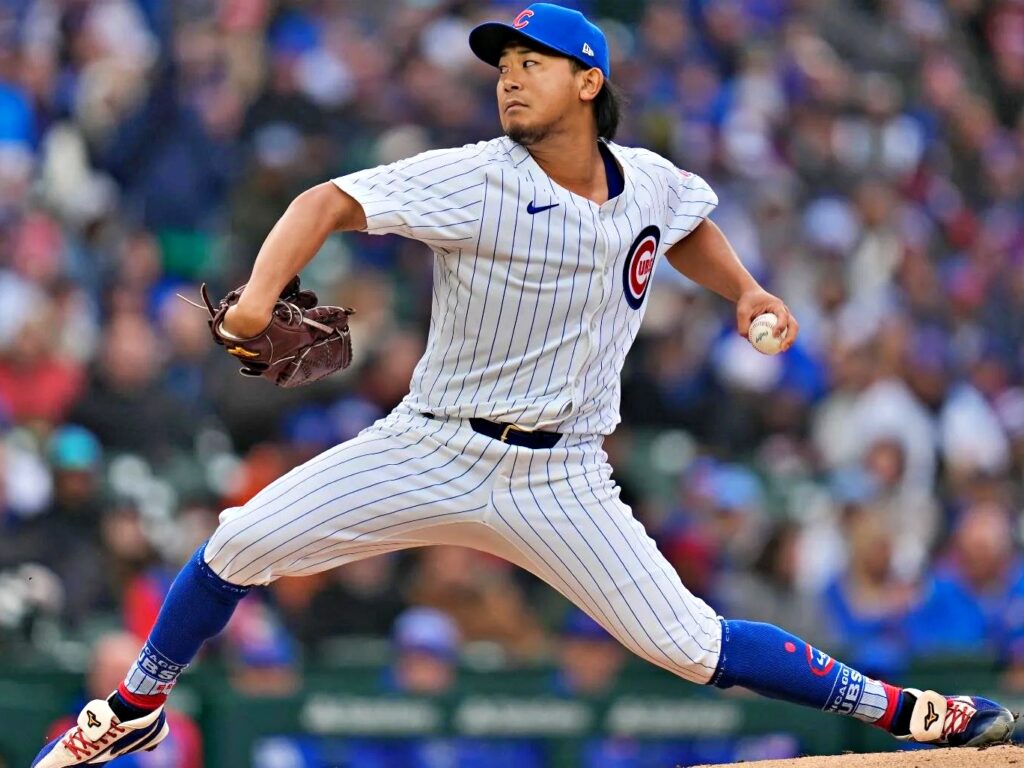
Imanaga was overshadowed by Yamamoto in free agency, but he has overshadowed his countryman so far in the regular season.
In his April 1 debut against the Colorado Rockies, Imanaga carried a no-hitter into the sixth inning and struck out nine batters. He did not allow an earned run in his first three starts.
In five April starts, he posted a 4-0 record and otherworldly ERA (0.98) and WHIP (0.80) marks. In 27.2 innings, he allowed just 19 hits, three earned runs, and three bases on balls. Imanaga has given the Cubs’ rotation a huge boost with offerings that include a low-to-mid-90s fastball, splitter, slider, and curve.
Imanaga is the first Cubs starter to go at least 4-0 through the first five games of his career, and only the 37th pitcher to do so in AL/NL history. He is the first starter since 1945 (Boston’s Dave Ferriss) to go at least 4-0 with an ERA below 1.00 in his first five career games.
The 30-year-old signed a four-year contract that, per a source, guarantees $53 million over four seasons. After the 2025 and 2026 seasons, Chicago will have the option to extend the deal to five years ($80 million total). If the deal is not extended in either offseason, Imanaga will have the right to elect free agency. The Cubs also paid a posting fee of approximately $10 million.
As with all imports, the question was how well and quickly he could make the adjustment to MLB. So far, at least, he’s answered the question well.
“One of Shota’s best traits is that he’s very curious. He’s very open,” Cubs manager Craig Counsell said. “He takes in information very well. I think he watches very well. And that leads to someone who’s very good at making adjustments.”
“Shota’s incredible,” Cubs reliever Mark Leiter Jr. said. “The way he handles himself, the type of person he is, it’s all been great. And then, obviously, the pitcher that he is has really been a joy to watch.”
Yusei Kikuchi
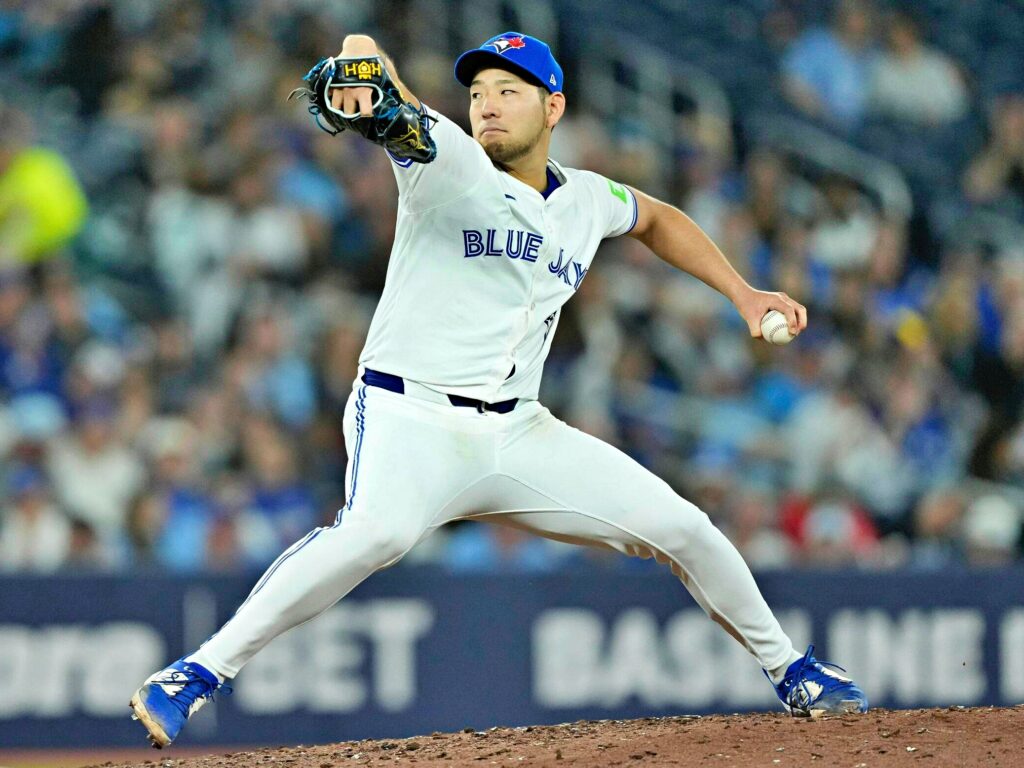
Though Kikuchi had bouts of inconsistency in 2023, his second season with Toronto, his overall performance represented a big step forward and he’s continued that into the early part of 2024. He’s always had elite stuff, but command was often an issue.
He posted a 2-2 mark with a 2.94 earned-run mark in April, with his only stumble coming against the Dodgers on April 27 when he gave up nine hits and four earned runs in six innings. However, he didn’t give up a base on balls in that game and averaged only two walks per nine innings over six starts. If he holds to that rate, it would be the best of his career. His best was 2.6/9 innings a year ago, and he averaged 3.75/9 innings over his first five MLB seasons.
“This is my sixth year in MLB, but I think this is the most confident I’ve felt,” Kikuchi said through a club interpreter. “It’s not just my performance, but in all of my pitches right now.”
Teammate Davis Schneider said, “He’s pretty locked in. I feel like I say this every time with him, but confidence is a big thing. You trust him, man. He’s being much more efficient with his pitch count. He’s got great [stuff]. His stuff is electric. He’s just in a really good spot.”
Kikuchi has a repertoire that includes a fastball, slider, curveball and new changeup, and he has added confidence. As one report noted, he’s “come a long way from the starter who used to struggle to escape the first or second inning.”
Kikuchi being consistently a top performer will enhance Toronto’s chances of again making the playoffs, as well as Kikuchi’s bargaining position after his contract expires at the end of this season.
Yoshinobu Yamamoto
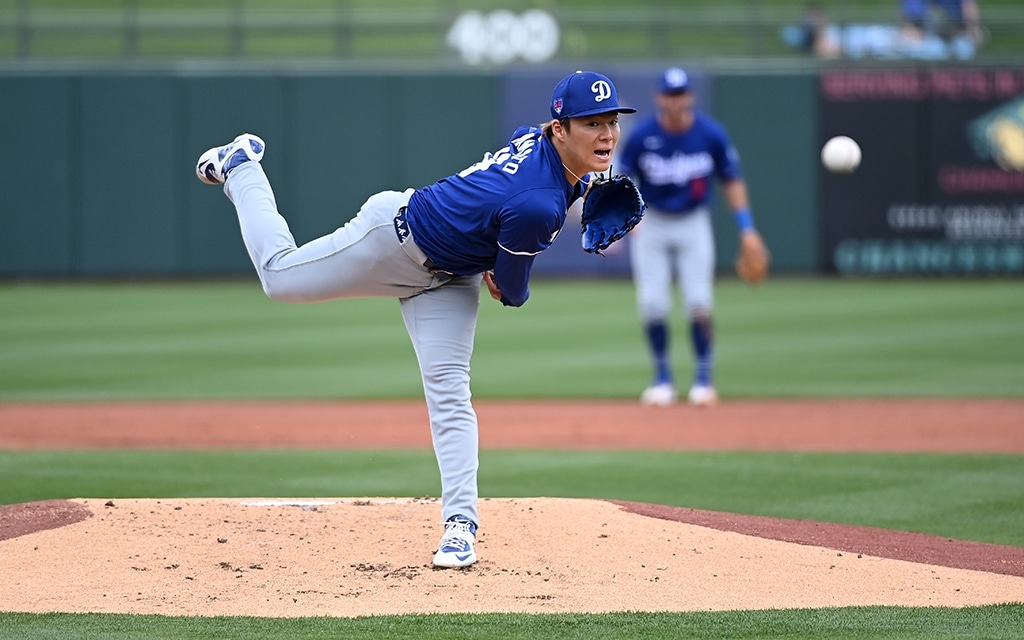
The Dodgers signed Yamamoto to a 12-year, $325 million contract in the hope that he can anchor their rotation for years to come. Since he’s just 25 years old, there is a better-than-average chance that he can be effective for most of the length of his contract.
He’s been inconsistent so far in the young season, but his overall statistics are good. In six outings, he posted a 2-1 mark with a 3.54 ERA and very good 1.07 WHIP. He struck out 37 batters and walked just six in 28 innings.
In spring training, Yamamoto had an 8.38 earned-run mark and 1.97 WHIP and then had a rough first regular-season outing when the Dodgers played San Diego in the second of the two games in Seoul. He lasted just one inning and made 43 pitches, giving up five runs, four hits, and a walk. He also hit a batter.
However, he followed that with a two-hit, no-run performance in five innings against St. Louis and then five innings against the Cubs, during which he gave up no runs on three hits while striking out eight batters. Then in his next two starts, he allowed six earned runs in 11 innings before finishing the month with a scoreless six-inning stint in a victory over the Washington Nationals.
The Athletic noted that Yamamoto is the same age Darvish and Masahiro Tanaka were when they came over from Japan and “figures to face some of the same obstacles that Darvish and Tanaka dealt with, adapting from everything to the schedule to the slipperiness of the baseball to the quality of the opposition to the length of the season. “Late-season fatigue is a fair concern,” one scout said. Yamamoto, another scout said, is the “biggest wild card of 2024, with No. 1 stuff. How quick can he adjust?’”
An interesting aside: Yamamoto wears number 18 for the Dodgers, which follows a tradition of ace Japanese pitchers sporting that number. Read about it here.
Yu Darvish
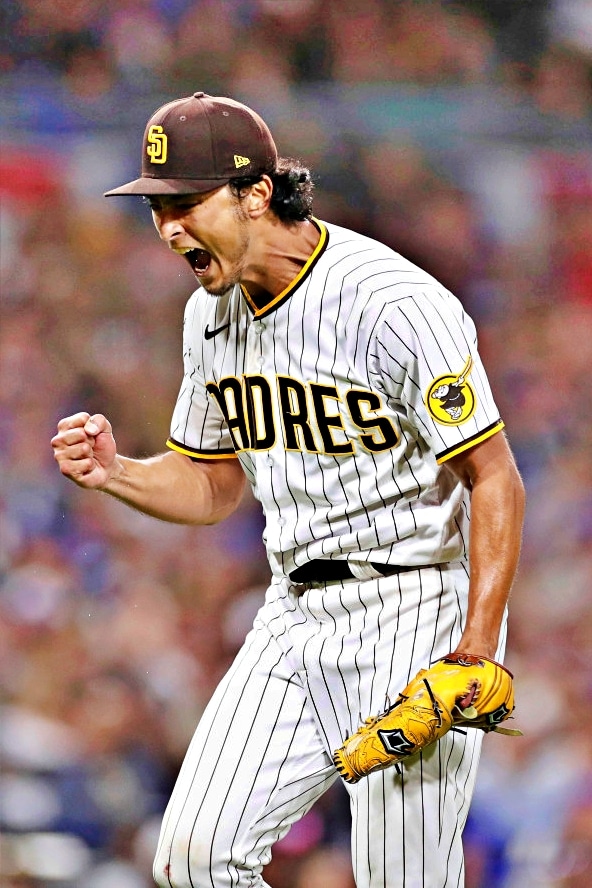
Darvish did not live up to expectations in 2023, particularly in the light of the $108 million contract extension he signed earlier in the year, and he didn’t pitch after August 28. He later said that he’d suffered a stress reaction in his right elbow, though not a stress fracture, and eventually underwent a minimally-invasive arthroscopic debridement.
He came to spring training healthy, posting a 2.89 ERA and 1.07 WHIP, and his first two starts of the regular season, though limited, were good. He went 3.2 innings in the season opener against the Dodgers, allowing two hits and no earned runs while striking out three and walking three. He followed that up by giving up just a run in five innings against the San Francisco Giants.
In his next three starts, however, Darvish allowed 13 hits, six walks, and 10 earned runs in 15 innings. On April 17, he was placed on the 15-day Injured List – retroactive to April 15 – because of “neck tightness.” He has previously dealt with back and neck issues, as well. But he returned to the active roster and started against Cincinnati on April 30, going five scoreless innings and allowing just three hits and no walks.
In six outings thus far, Darvish is 1-1 with a 3.45 ERA and 1.15 WHIP.
Yuki Matsui
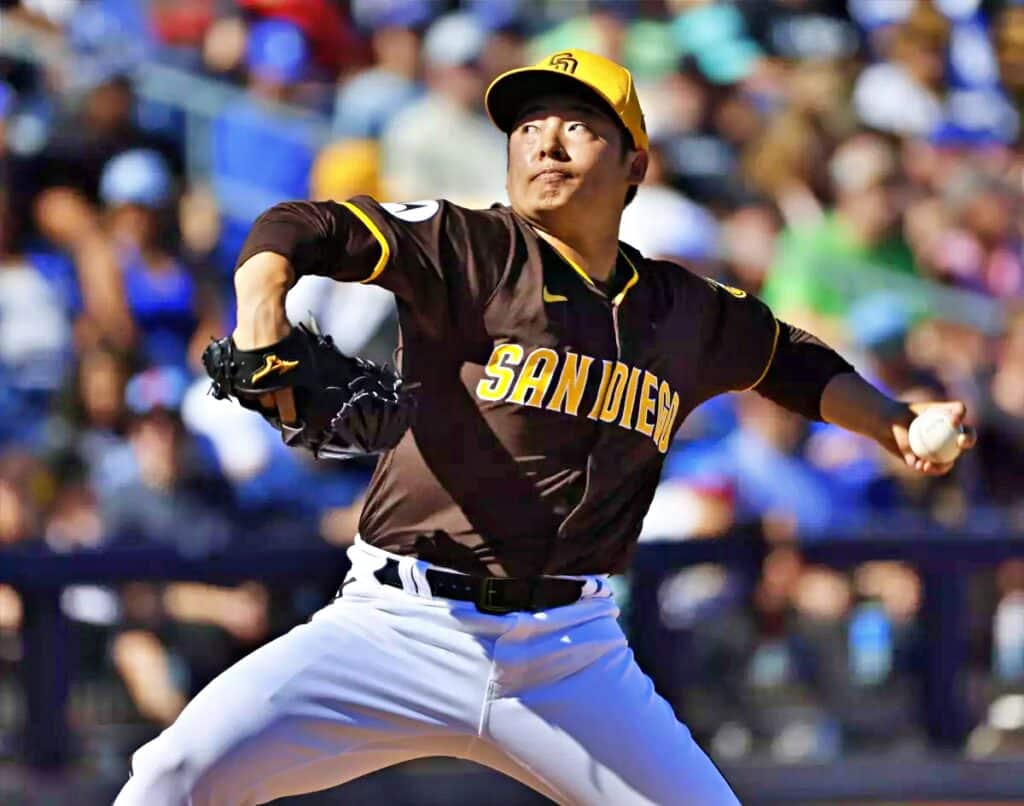
Matsui, a 28-year-old lefthanded reliever in his first MLB season, missed much of spring training with back issues, throwing only three innings, but he struck out eight batters in that time – including striking out the side in his spring debut against the Dodgers.
He also appeared in both games against the Dodgers in Seoul, giving up a couple of hits, striking out one, and walking one over 1.1 innings. By the end of April, he had appeared in 15 games with a 2-0 record, 2.45 ERA, and 1.02 WHIP over 14.2 innings. He did not give up a run in 12 of his outings.
Though Matsui was a closer in Japan, he’ll begin in setup situations with the Padres while he adjusts to MLB. He has yet to come in as a closer for San Diego.
The 28-year-old lefthander signed a five-year, $28 million contract with the Padres. He was a full international free agent, so the Padres didn’t have to pay a posting fee or give up draft compensation.
Seiya Suzuki
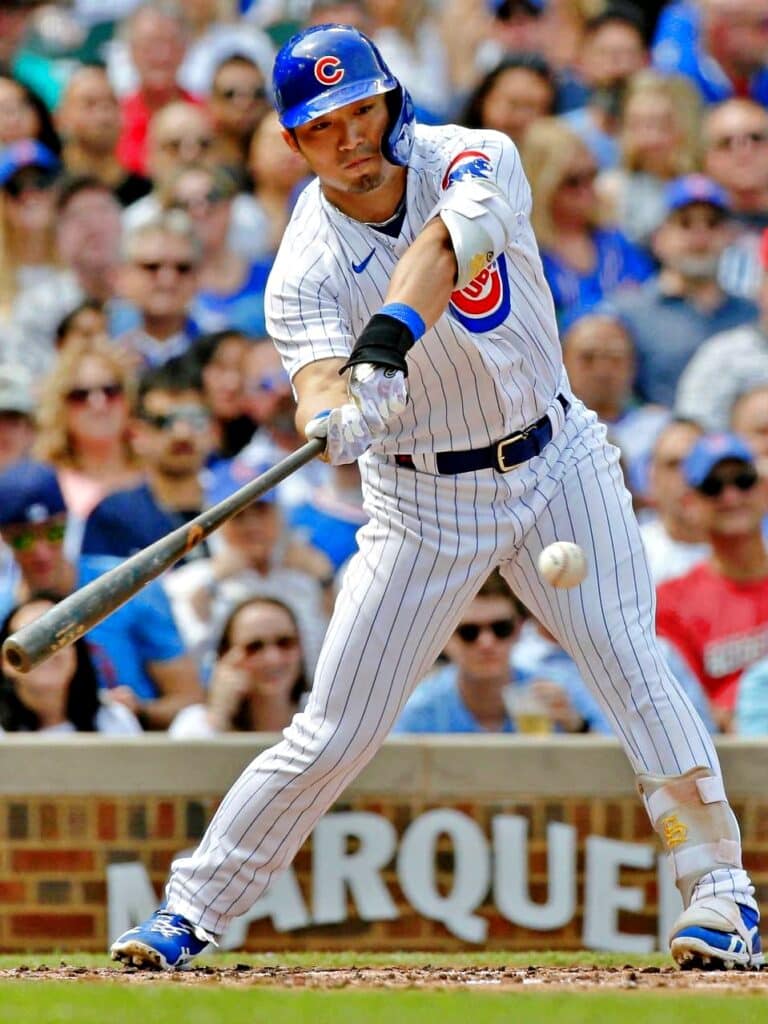
Like Kikuchi, Suzuki took steps in the right direction during 2023 and continued into April 2024 before hitting the Injured List on April 15 because of an oblique injury.
Suzuki essentially had two seasons in 2023, his second with the Cubs. In the first half, he posted a middling .748 OPS; In the second half, that figure was a robust .938. During spring training 2024, he batted .459 with six home runs and a huge 1.593 OPS and followed that by averaging .305 in 15 regular-season games with an .893 OPS, three home runs and 13 RBIs. He also posted a .368 on-base percentage, which, if carried through the year, would be the best of his three years with the Cubs. During his nine seasons in Japan’s Nippon Professional Baseball (NPB), he had a .402 OBP.
“A lot of it had to do with Seiya really starting to own who he is as a hitter,” Cubs hitting coach Dustin Kelly said during Suzuki’s strong finish last season. There wasn’t a mechanical swing adjustment. There weren’t a lot of things that we talked about outside of being aggressive and getting your pitch to hit. It doesn’t matter what the count is or what the situation is. That freed him up a little bit. And, obviously, success breeds confidence.”
Cubs outfielder Ian Happ added, “There’s not a physical flaw. He has all the ability in the world. It’s just being mentally confident in how the at-bats play out.”
Reportedly, Suzuki has started light baseball activity in his recovery process, but is still “weeks from” a minor-league rehab assignment.
“It’s a moderate right oblique strain so we’re probably looking at around four weeks, plus or minus,” manager Craig Counsell said. “[We’re] seeing how the next really 10 days go and how quickly we can get him symptom free.”
Kenta Maeda
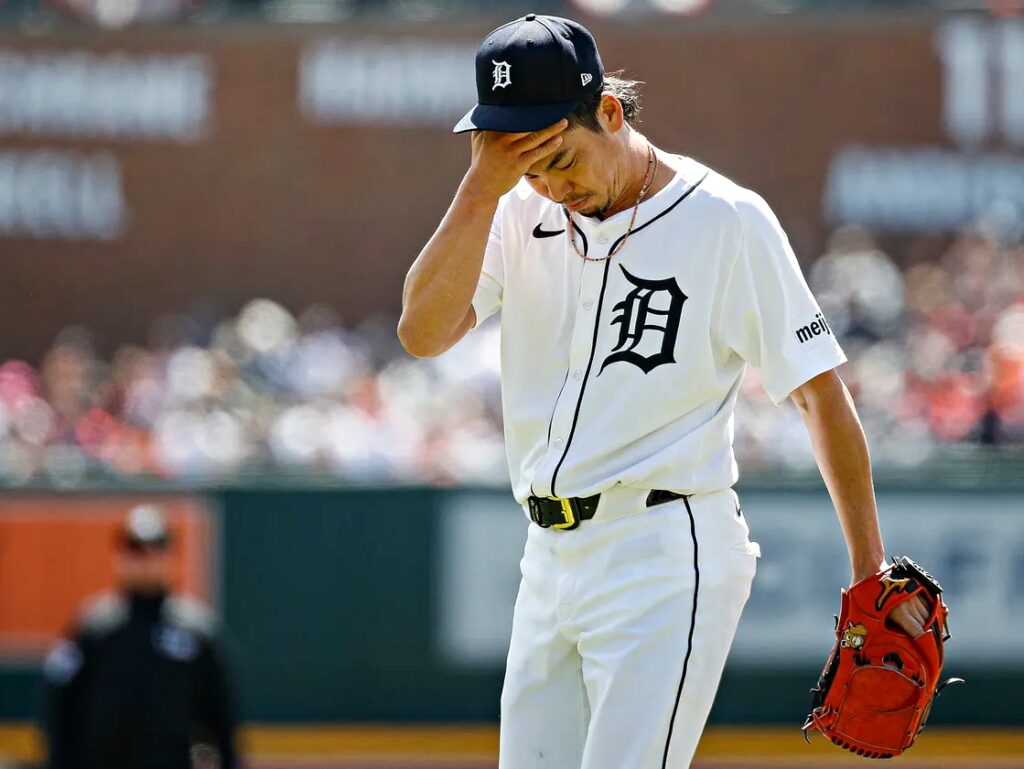
The 35-year-old Maeda signed a two-year, $24 million deal with Detroit in the off-season. The Tigers, who finished second in the weak American League Central Division with a 78-84 record, need him to be the pitcher he was in the second half of last season if they are to contend for the division title.
So far, though, it hasn’t worked out that way. Maeda is 0-1 with a 5.96 earned-run average in five outings (he was scheduled to pitch against St. Louis on April 29, but the game was postponed). He also has a 1.37 WHIP, much higher than his career mark of 1.15, and has been bitten by the home-run bug, giving up seven in 22.2 innings. Over his career, he has a 14-percent home runs-to innings pitched ratio.
“The inconsistencies come with his strike-throwing,” manager A.J. Hinch said. “He has to create leverage to get them to swing at the pitches he wants them to swing at. … He just hasn’t been able to throw a strike when he needs to, and that puts him in bad counts, and in bad counts, they can eliminate some of his pitches and go into attack mode.”
Maeda explained that “There’s certain parts within my mechanics that I have to clean up. Prior to the [Tommy John] surgery [in September 2021], I didn’t have to be aware of it or mindful of it. Everything just synced, and I was able to go out there and deliver my pitches naturally, but since the surgery, especially this year, there’s one thing that my mind is trying to do, and my body is doing something else, so there’s a little bit of a discrepancy between the mind and the body. That part needs to be all synced up. I’m having some trouble getting those to align.”
Maeda has a 5.07 career earned-run average in March and April, but a 3.97 overall career mark, so the Tigers can hope that means he’ll figure things out relatively soon.
Masataka Yoshida
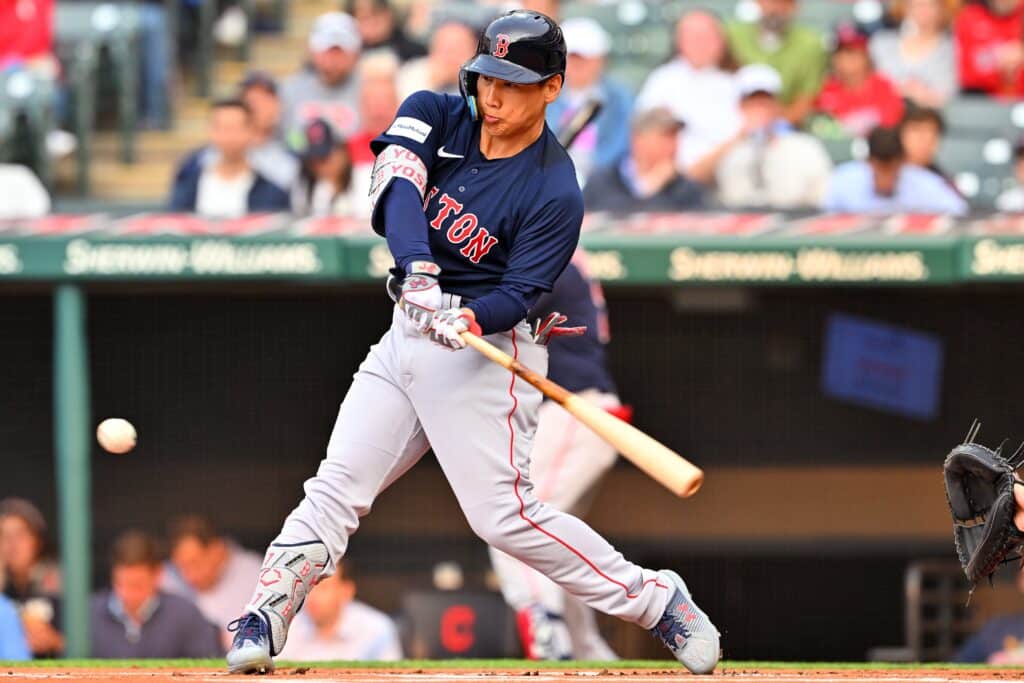
So far in 2024, Yoshida hasn’t been what the Red Sox need, though he did go 5-7 in his last two games of the month to boost his average to .275 with a .736 OPS. He had been in a 3-18 funk prior to those two games. That is reminiscent of his falloff in the latter part of 2023, his first MLB season. After batting .314 in July of 2023, he posted a .261 average and .281 OPB in August and slashed .250/.268/.388 in September, going hitless in 10 games in the season’s final month.
In a mid-September posting, The Athletic noted that Yoshida produced only an 0.7 fWAR, has “been one of the worst defensive outfielders in baseball this year, and hasn’t held up his offensive performance after an early-season hitting streak . . .”
Yoshida’s late-season dropoff was in part because of a lack of stamina. Now, with a better knowledge of how to prepare for the travel and stresses of the long MLB season – and without the added load of playing in the World Baseball Classic – it was hoped that he’d be better prepared. However, In the first month of this season, he had just three multi-hit games, along with two home runs and 11 RBIs.
Yoshida had been expected to get more time in the designated-hitter role this season, as last year’s DH, Justin Turner, is now with Toronto, and the Red Sox want to get more athletic in the outfield. After starting 87 games in left field in 2023, he’s played just one inning at that spot this season.
Kodai Senga
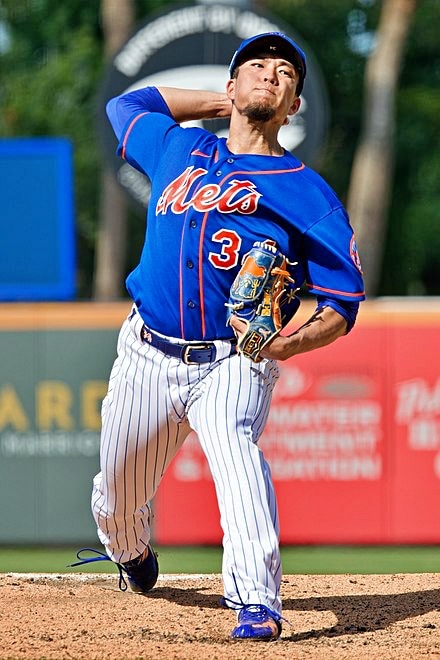
Senga had a good first season in MLB, but he suffered a setback early in spring training when he was diagnosed with a moderate right posterior capsule strain and received a platelet-rich plasma (PRP) injection. On March 21, the Mets announced that an MRI on Senga’s right shoulder revealed no issues. Three weeks later, the club announced that it had moved Senga from the 15-day Injured List to the 60-day IL, which means that May 27 is the earliest he could return to the active roster.
Senga didn’t throw at all for nearly a month. Beginning in late March, he threw off flat ground for approximately five weeks before throwing a very successful live batting practice session on April 29. He threw all his pitches during the session and reached the mid-90s with his fastball. Senga will face hitters two more times, with three days of rest between each session. If all goes well from that point, he’ll begin a Minor League rehab assignment around May 11.
“The way the ball was coming out, there was no hesitation,” Mets manager Carlos Mendoza said. “He was just letting it loose, using all of his pitches. Since he went down, the thing I’ve been saying is, ‘How is he going to bounce back?’ I think the biggest thing is tomorrow and the following day. But so far, he looked pretty sharp today.”
Clearly, the Mets need a healthy Senga in the rotation if they are to improve on last season’s massively disappointing result. In the first of a five-year, $75 million deal, Senga posted a 2.98 ERA with 202 strikeouts in 166 1/3 innings. He was named an All-Star, placed second in the National League Rookie of the Year voting, and finished seventh in NL Cy Young voting.
NOTES: Could the Dodgers, who have a star-studded roster as it is, add yet another potential star during the next off-season? Rumors – which, of course, can mean everything or nothing – have them as the favorites to land the Chiba Lotte Marines’ young starter Roki Sasaki, should the Marines agree to post him . . . Righthanded reliever Naoyuki Uwasawa, who signed a minor-league contract in the off-season with the Tampa Bay Rays after nine seasons with the NPB’s Nippon Ham Fighters, was traded to Boston on March 28 for cash and is now with the Red Sox’ AAA Worcester, MA, affiliate. He had been reassigned to the Rays’ minor-league camp in late March and then almost immediately dealt to Boston. So far, he’s posted a 2-1 record at Worcester with a 4.80 ERA in three starts totaling 15 innings . . . Reliever Shintaro Fujinami was a late-spring demotion by the Mets. A year ago, his pitchers were measured at as high as 102.6 miles per hour by the radar gun, but he walked an average of 5.1 batters per nine innings. Currently playing at AAA Syracuse, Fujinami’s command issues have continued. In eight appearances covering 5.2 innings, he’s walked 13 batters in just 5.2 innings. He has bloated ERA and WHIP marks of 15.88 and 3.35, respectively . . . With the debuts of Yamamoto, Imanaga, and Matsui in 2024, 70 Japanese imports have now played in at least one MLB game . . . An MLB.com article last September listed six Japanese players who were candidates to move to MLB. Of the six, Yamamoto, Imanaga, Matsui, and Uwasawa made the move. Starting pitchers Kona Takahashi of the Saitama Seibu Lions and Masahiro Tanaka, the former New York Yankee who has played with the Rakuten Golden Eagles since 2021, did not. Reportedly, the 27-year-old Takahashi wanted to be posted but the Lions did not allow it. Tanaka, 35, underwent arthroscopic surgery in late October to clean up his right elbow, and he re-signed with Rakuten on a one-year contract for $1.77 million plus incentives. So far, Takahashi has an 0-2 mark with a 2.70 ERA with the Lions and also made four relief appearances for their team in the Japan Eastern League, a developmental league roughly equivalent to the U.S. minor leagues. Tanaka has made one relief appearance for Rakuten’s Eastern League entry, giving up five hits and two earned runs in 3.1 innings.
